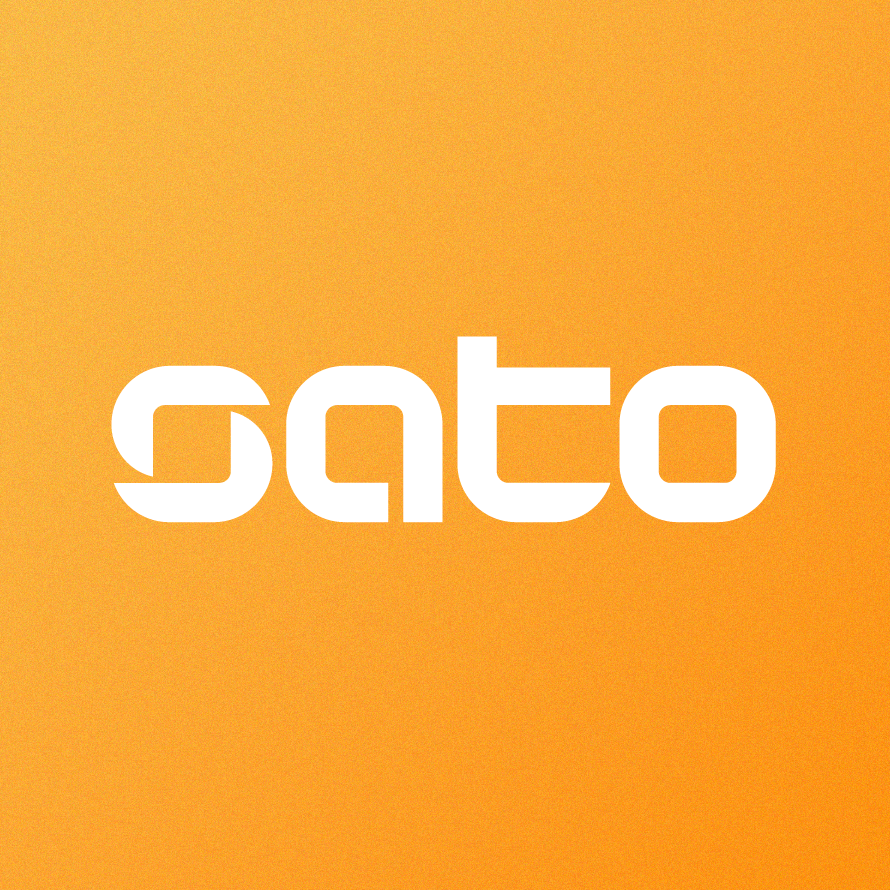Transforming tenant experiences through user-centered design and seamless digital solutions
Goal
The goal of this project was to enhance the OmaSATO app, a communication tool for tenants of SATO Corporation, one of Finland’s largest rental housing providers. By identifying key pain points and improving the user experience, I aimed to increase tenant engagement, particularly targeting long-term tenants who weren’t fully utilizing the app. The focus was on streamlining communication, boosting customer satisfaction, and ultimately improving the retention of long-term tenants.
Project Process & Phases
User Research & Problem Definition
I began the project by conducting interviews with SATO tenants and company experts to understand the reasons behind long-term tenants not fully utilizing the OmaSATO app. During this stage, I defined the business objectives and project context through brainstorming sessions, ensuring that the solution aligned with SATO’s customer-centric strategy. I used tools like stakeholder maps and empathy maps to visualize key partners, user emotions, and pain points, while persona development and customer profiling guided the design decisions.
My research approach for the SATO UI/UX project involved several key steps to ensure a comprehensive understanding of both tenant needs and business objectives:
Business Objective & Context – At the start of the project, I worked with the team to define the business objectives and project context through brainstorming sessions and analyzing materials provided during the Sprint kick-off. My focus was on aligning the tenants’ needs with SATO’s customer-centric strategy, ensuring the solution would enhance their overall experience.
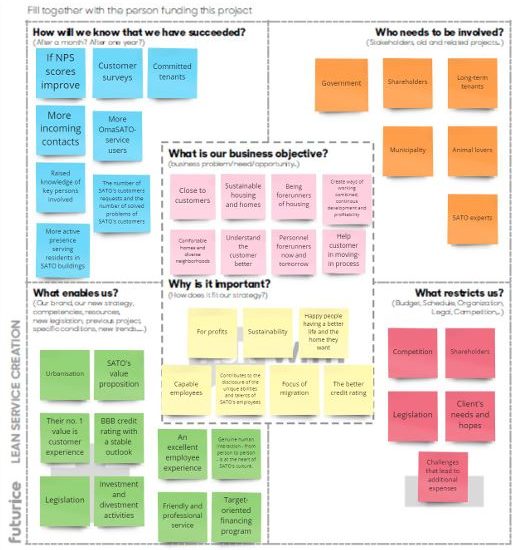
Immersion – I explored the key project questions from both tenant and SATO perspectives, integrating desk research and trend analysis to create a complete project overview. This immersion phase helped me gain a deeper understanding of the challenges from all angles.
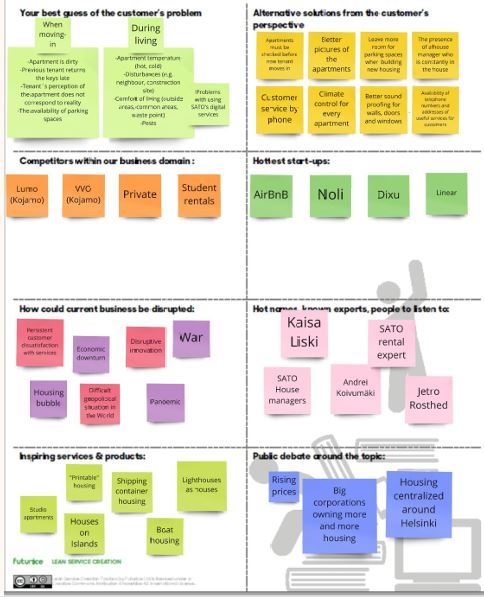
Stakeholder Map – I visualized the key partners around the tenant, emphasizing their central role in SATO’s mission, while also mapping the influence of other stakeholders. This helped identify the broader ecosystem within which the solution would operate.
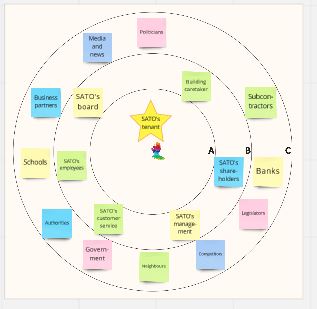
Empathy Mapping – I consolidated user emotions, needs, and pain points gathered from interviews and desk research. This exercise helped me better understand the underlying motivations and frustrations of tenants, providing crucial insights into their experiences.
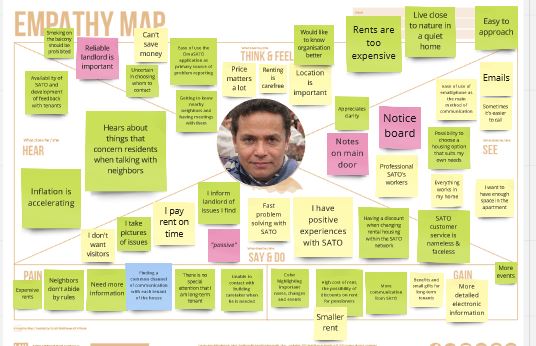
Insight – I derived key insights from interviews and desk research, focusing on tenant emotions, expectations, and experiences. By identifying patterns, I was able to generate new ideas that would improve rental satisfaction and address pain points.
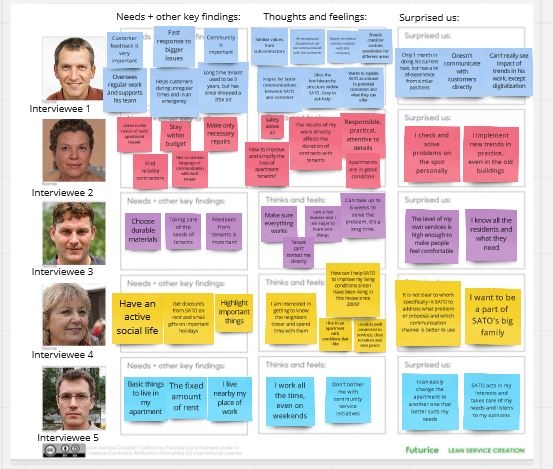
Research Wall – I collected and organized all the pre-sprint findings into a visual format, creating a research wall that helped me and my team gain a comprehensive view of the key data and insights.
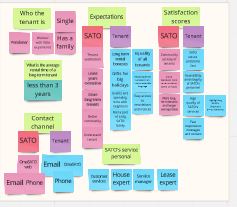
User Persona Development – I created a representative persona to reflect tenants’ motivations, responsibilities, and levels of satisfaction with SATO’s services. This persona served as a guide throughout the design process, ensuring our solutions were tailored to the real needs of the tenants.
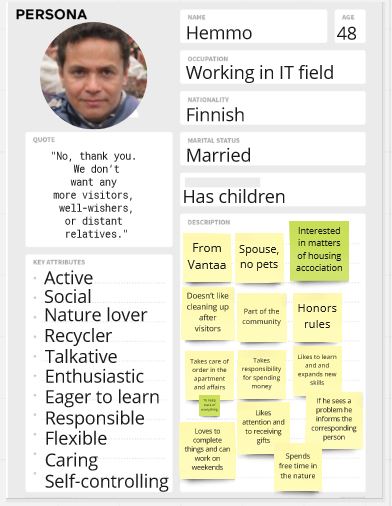
Customer Profiling – I grouped tenant responses to highlight service gaps and areas that required improvement. This profiling helped me identify the most critical issues that needed to be addressed in the design solution.
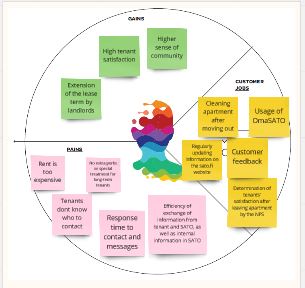
Design Sprint
The project followed a five-day Design Sprint structure, allowing me to rapidly ideate, prototype, and test solutions.
1. Map: I identified the key challenge of improving customer satisfaction and retaining long-term tenant

2. Sketch: Through exercises like Lightning Demos and Crazy 8’s, I brainstormed various creative solutions.
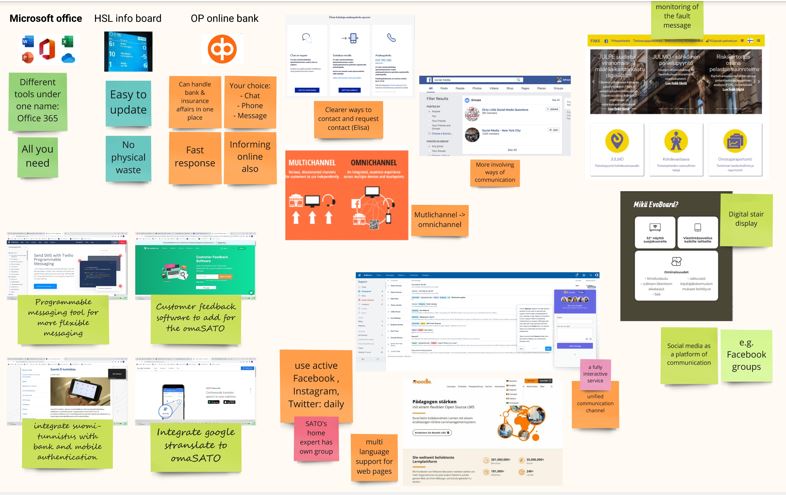
3. Decide: After presenting my ideas to SATO personnel, the team selected a personalized profile feature to be integrated into the app.
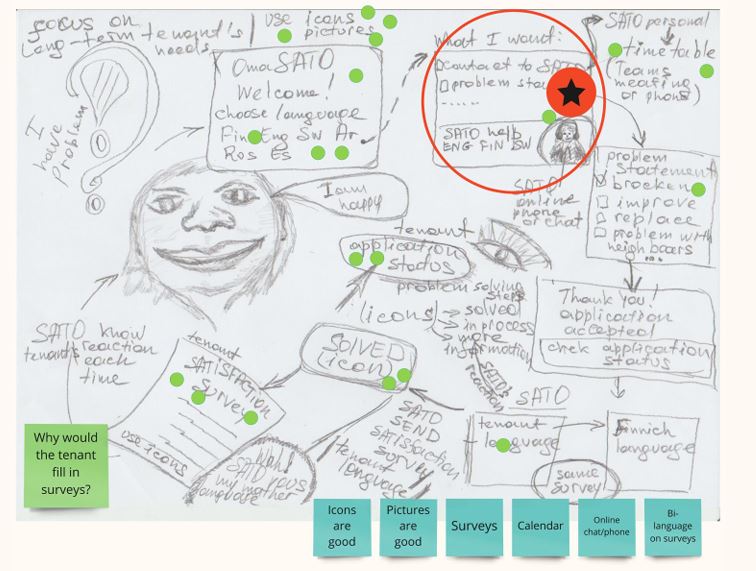
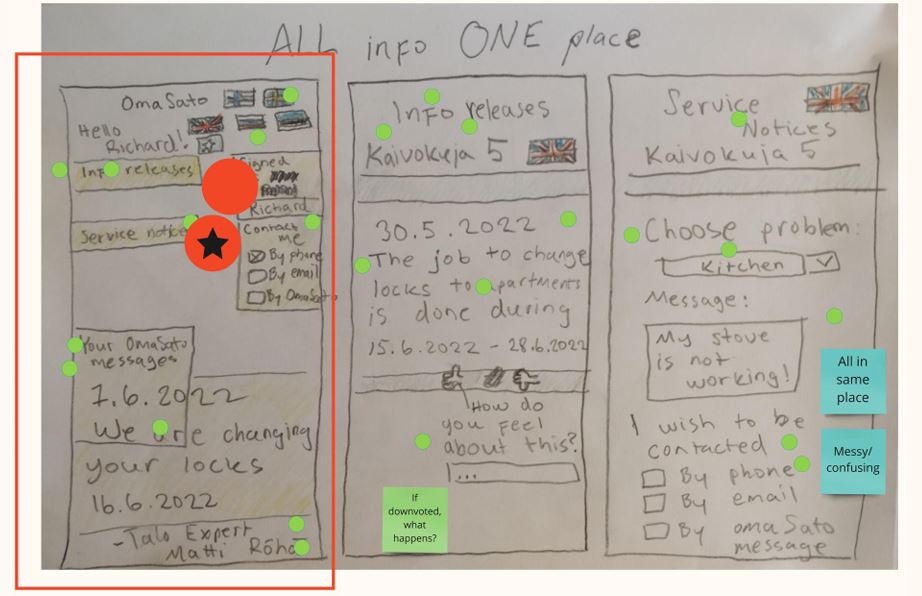
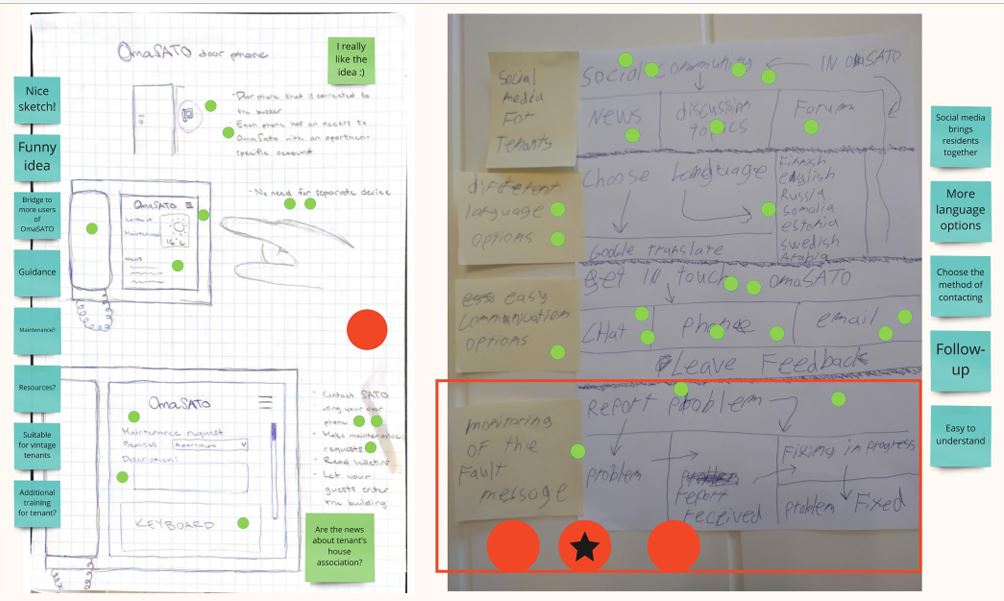
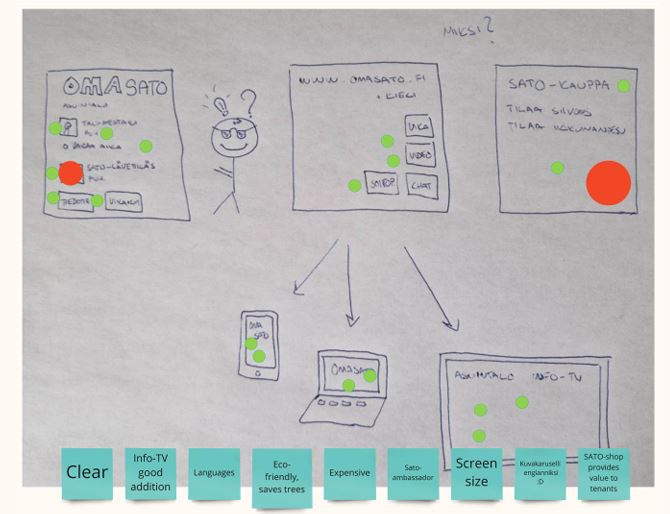
4. Prototype: I developed mockups and a scenario-based user journey, including a calendar booking system.
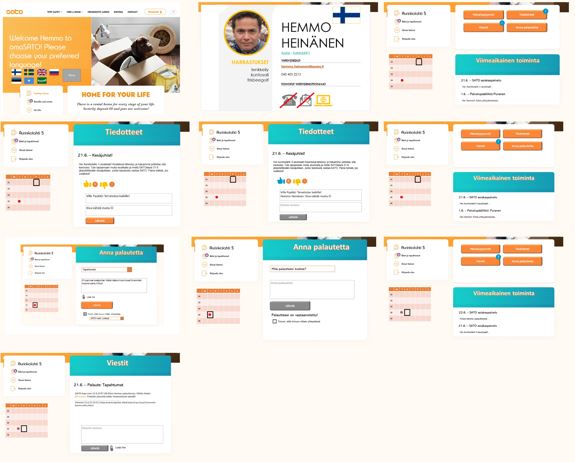
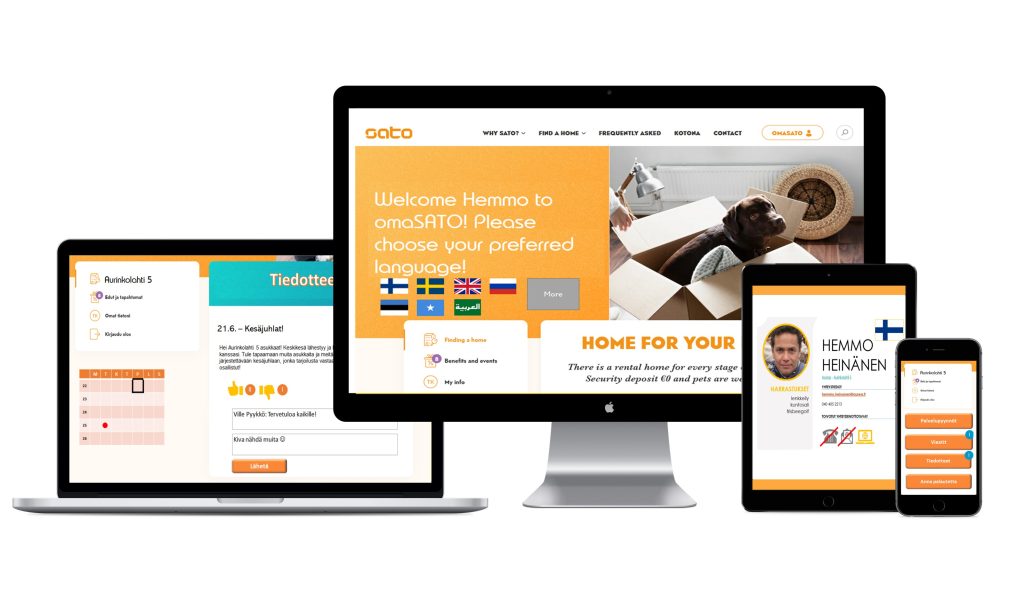
5. Test: To validate usability and effectiveness, I conducted Five-Point Interviews with tenants and SATO staff.
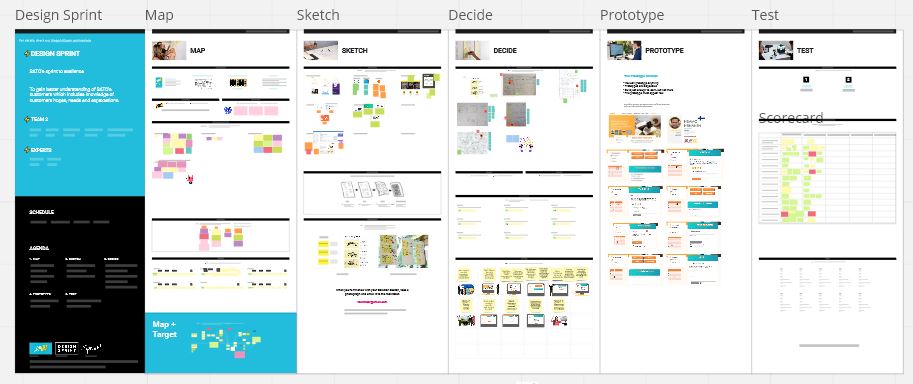
Solution: OmaSATO Calendar Feature
The final solution was the addition of a calendar feature that allows tenants to easily book shared spaces, such as saunas and laundry rooms. This feature streamlined the booking process, making it both user-friendly and efficient. It also provided resource efficiency for SATO by reducing administrative work, saving time, and cutting down on personnel costs. The solution contributed to increased tenant satisfaction, ultimately improving tenant retention.
Business Impact & Strategic Tools
To evaluate the solution’s financial and strategic viability, I used tools like the Business Model Canvas and Service Blueprint. The Business Model Canvas helped visualize the current state of the OmaSATO prototype, required investments, and potential revenue streams, ensuring alignment with SATO’s long-term business objectives. The Service Blueprint mapped the entire customer journey, identifying pain points and opportunities for optimization, while distinguishing between human and automated processes.
The Business Model Canvas provided a clear visualization of the OmaSATO prototype’s current state, required investments, and potential revenue streams, ensuring strategic alignment with SATO’s long-term goals. By centralizing tenant communication, OmaSATO enhances customer satisfaction while balancing implementation costs, including development, marketing, and maintenance.

The Service Blueprint visualizes the customer journey within the OmaSATO app, mapping interactions between tenants and SATO employees while distinguishing human and automated processes. This tool helps identify pain points, optimize service efficiency, and refine the application prototype for a smoother user experience.

Key Takeaways & Learnings
This project provided me with valuable experience in user research, service design, and user-centered design principles. It reinforced the importance of collaboration, iterative design, and rapid testing to refine solutions and enhance the user experience. Additionally, the project deepened my understanding of design thinking and its role in developing solutions that are both user-friendly and strategically aligned with business goals.
Challenges
A significant challenge I faced was understanding why long-term tenants weren’t using the app as their primary communication channel. This required in-depth research to uncover tenant frustrations, behaviors, and the needs of both tenants and the service provider. Balancing the complexity of user needs with SATO’s business objectives, while ensuring the solution would be functional and cost-effective, was a challenge in itself. Additionally, designing a user-friendly solution for a diverse user base, with varying levels of digital literacy, was another crucial aspect I had to address.
Tools
- Miro RealtimeBoard
- MS PowerPoint
